Interesting transforming sofa.












Emmanuel Fonte | Music | Art | Leadership
If music be the food of love, play on. Emmanuel Fonte website is about music, art, real estate, architecture, design and decor. Occasionally, I talk about my other passion, hockey.
Interesting transforming sofa.












Kitchens are more than just where you prepare your meals. Nowadays, the kitchen is a command center, dining area, and the one room in the home where families spend the most time together. If you’re looking for a way to spruce up the space, and an overhaul isn’t in the budget, try one of these easy kitchen cabinet upgrades. You can brighten the room with a coat of cabinet paint, add handy storage features like a pull-out shelf or a free-standing island, or even build a window seat with stock cabinets—all with our help! Here are 9 of our top kitchen cabinet upgrades, along with step-by-step instructions chock full of pro tips, shopping lists, and tools lists to help you get the job done right.
read the rest here at thisoldhouse.com
Can be frozen in amazement, mouths open, in Switzerland built the most expensive house in the world, which is 7.5 billion euros (12.2 billion dollars), you’re right, counting the zeros, namely billion. King of chic and shocking, well-known Briton Stuart Hughes, together with Kevin Huber, owner of design agency, located in Zurich, created the most expensive and unique home in the world.



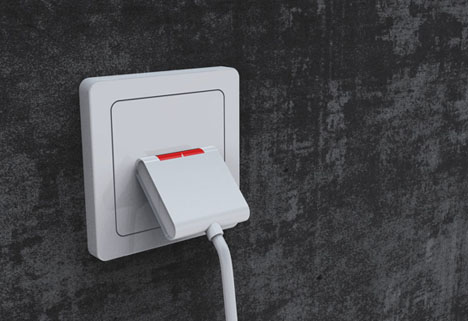
Until electricity is entirely wireless, the question of how to deal with dense plugs will continue to nag at designers – this solution, while nifty, poses a new problem while trying to solve the old one.
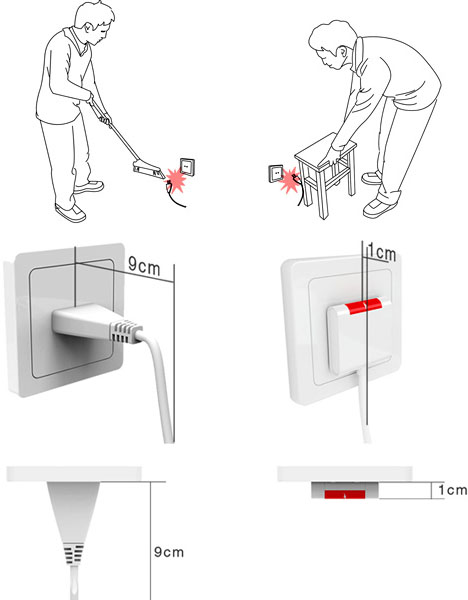
There are angled, bent and flush-fitting solutions, but when you go to change configurations (like standing up from a low seat with your laptop) your cord may have other ideas.
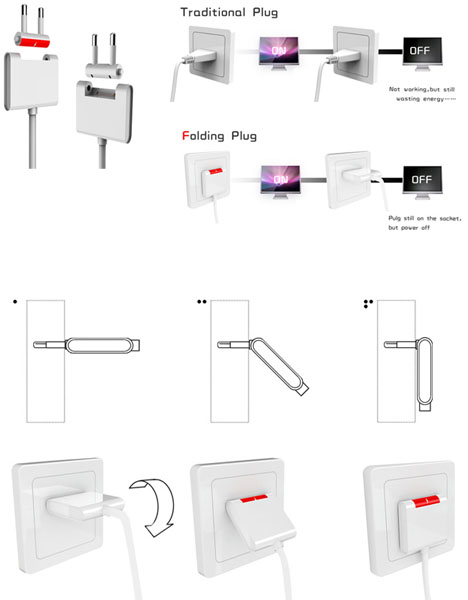
Huang Guanglei‘s vision for this flexing plug looks perfect, but in addressing the issue of mobility it creates a problem of power. Specifically, it is designed to flip up and down not just to accommodate movement but also to turn on and off. This last tweak is neat insofar as it results in an adjustable dimmer switch for lights, but less functional for something that uses continuous power to run.
We consulted with closet-design pros from across the country to learn the secrets to creating the ultimate storage unit, no power tools required.
You need to dedicate only two-thirds of your closet to hanging rods. To maximize that space, mount two of them—one well above eye level for longer garments and one a little more than 3 feet off the ground for shorter (or foldable) ones. Position both at least 1 foot from the back wall.
Read the rest here at thisoldhouse.com
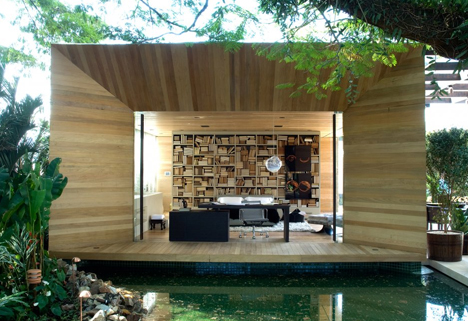
Outside and inside slide seamlessly together in this lovely little loft built of thick wooden beams, textured limestone floors and rough stone walls, all tied together by thin and unobtrusive steel members and spanned, when necessary, with crystal clear glass.

Designer Fernanda Marques’ core idea involved tying together a classic country villa with the rigorous Modernism of masters like Mies van der Rohe, weaving a series of boxy rectangular forms into their environment on the outskirts of Sao Paulo, Brazil.
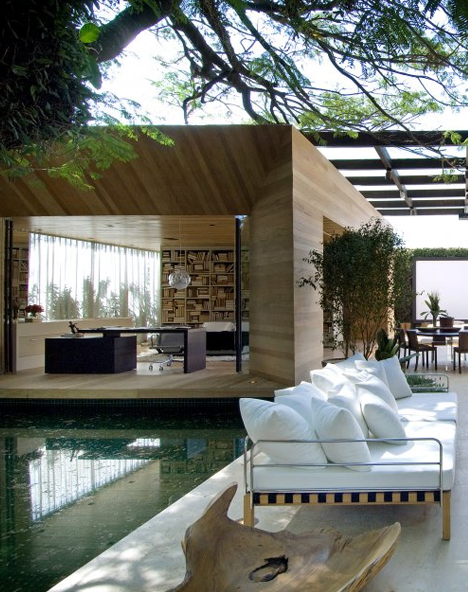

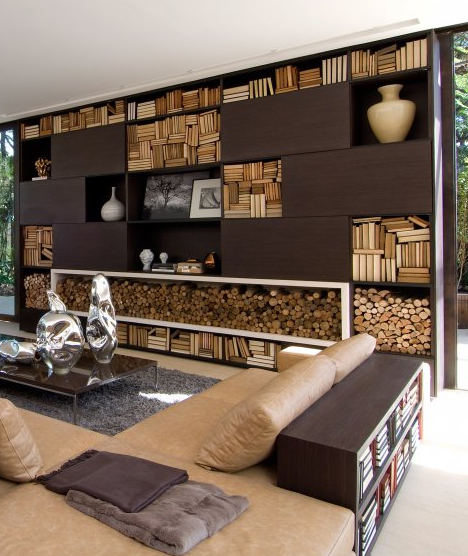
Wooden browns are a recurring theme, from wall-wide bookcases to smaller shelves, side tables, sofas, sheets, Â blankets and cushions, both within and without the thick-walled central library space.
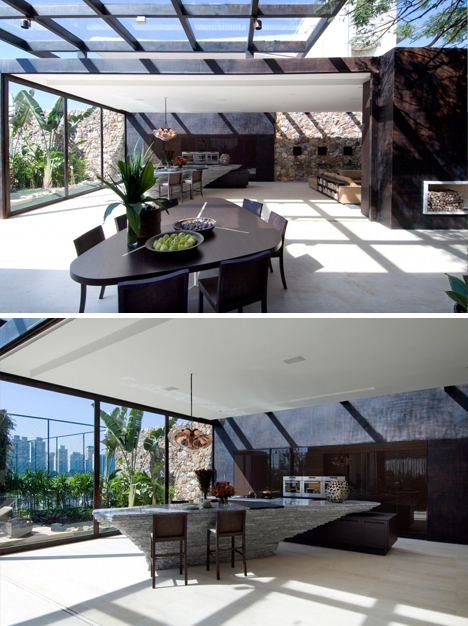
A heavy stone table, built-in niches, cabinets and bookcases also blur the boundary between furniture and architecture, projecting into and out of walls and adding a rich layer of variegated materials to the already-organic interior design.
By: Karin Beuerlein
 Insulating your home, including the attic, can shave up to 10% off your energy bills. Image: CertainTeed
Insulating your home, including the attic, can shave up to 10% off your energy bills. Image: CertainTeed
If you made green home improvements over the last few years with high hopes for lower energy bills and a quick recoup of your initial investment, you got an awakening: Your monthly bottom line likely held steady—or, worse, went up.
Before you shun green, recalibrate your thinking from expecting fat returns to understanding the new bottom line: Smart retrofits help you hold your ground against rising energy costs.
Energy prices as a whole have gone up over the last decade, especially in certain regions of the country.
Although natural gas prices have dipped a bit since 2008 and electricity prices have stayed level, the trend line goes up for both from 2011 forward.
The U.S. Energy Information Administration estimates an average annual increase in residential energy costs of 2.3% through 2035.
So…if energy cost projections hold, and assuming an average annual American energy bill of $2,200, you’ll pay 2.3% more each year (that’s $50 the first year) if you do nothing to reduce your consumption. Your bill will inch closer to $4,000 by the year 2035. Ouch.
If the only reason you’re making retrofits is to manage energy costs, look for projects with maximum bang for the buck.
Rule of thumb: Try to beat the 2.3% annual average with green home improvements that reduce your energy consumption by 5% or more but have a modest initial investment. And don’t forget to ask whether your utility or state government offers rebates or tax credits for these improvements.
1. Seal and insulate ductwork that runs through unheated spaces—the attic, a crawl space, a garage. It’s not glamorous, but it can improve the efficiency of your heating system by 20%—a 5% bill reduction overall. If you hire an HVAC pro for this job, you’ll invest a few hundred dollars for labor and materials.
2. Buy a programmable thermostat. Is it possible you haven’t done this yet? For just $25 to $250, the you can save, on average, around 8% on energy bills simply by programming it properly.
3. Add attic insulation and seal air leaks. One of the best energy-saving improvements out there, because insulating and sealing your home can reduce your energy bills by 10%. Upgrading your attic insulation to the R-value recommended for your region costs anywhere from $.25 to $1 per square foot, including materials and labor; it’s less if you do it yourself.
But you won’t get the maximum savings if you don’t seal air leaks, so plan this as a combo job. Caulking and weather-stripping typically costs from $50 to $350, depending on the size of your house.
Aerial view of downtown Boston and the harbor, photo by Kevin Tostado.
Recently, AGBeat columnist Jeff Brown extolled the virtues of investing in Texas and CondoDomain.com President Hoyt Morgan named Washington D.C. as the top city for investing.
There are many reasons a city can be seen as a quality location for investment, and today in the spirit of school starting, we look to Move.com‘s list of Top 10 Best Back to School Real Estate Investment Cities, giving Boston the top spot.

So why did Boston take the cake? According to Move:
With a median list price of $335,000 in June 2011, the Boston/Cambridge market has one of the higher median list prices of the bunch, but also has high renter demand from students at over 50 colleges including Harvard and MIT, ranked two and four. The median list price in Boston has dropped by 2.62% since last June. Average rental rates in Boston in June 2011 ranged from $3,122 for a two bedroom to $3,913 for a three or more bedroom unit, both higher than a mortgage payment of around $1,370 for a median-priced home with a 20% down payment and current mortgage rates for a 30-year fixed loan. Boston was also named one of the top 10 turnaround towns by CNN Money in May 2011.
“In Cambridge and some of the Boston Proper neighborhoods we have been seeing rents rising with demand and projections of further increases of up to 25%,” said Boston-area broker owner Paul Turcotte.
According to the recent Move, Inc. investor survey, “In the next two years, real estate investors are expected to outnumber traditional homebuyers in their local markets by three to one, and 56.5 percent plan to put their investments to work as rental properties.”
“Local markets with universities or colleges can be an attractive option for many local real estate investors,” said Move, Inc., Chief Executive Officer, Steve Berkowitz. “Housing demand in college towns is generally high and vacancy rates are usually low. Combine the supply and demand ratio with rising admissions and the five percent rise in rental rates expected by the end of the year, and rental property in college towns can be a smart option for the right investor.”
 While visiting Edmonton this summer, my friend Don, played me a couple of tunes from “some Foster guy”. When David Foster produces an artist, it’s hard not to pay attention. As soon as I came home, I looked for the CD. The pop ghosts most obviously haunting the CD are those of a young Billy Joel and even younger Elton John. There’s even a little Dave Grusin from the “The Firm” soundtrack (one of the greatest of all times… in my opinion).
While visiting Edmonton this summer, my friend Don, played me a couple of tunes from “some Foster guy”. When David Foster produces an artist, it’s hard not to pay attention. As soon as I came home, I looked for the CD. The pop ghosts most obviously haunting the CD are those of a young Billy Joel and even younger Elton John. There’s even a little Dave Grusin from the “The Firm” soundtrack (one of the greatest of all times… in my opinion).
On East of Angel Town, Cincotti blazes through an assortment of moods and tempos. He isn’t scared of letting his listeners peak into his heart and see what he’s thinking and feeling, but that’s not to suggest that his music is confessional. Rather, Cincotti is a storyteller. “Angel Town” is an upbeat ode to the place that Cincotti loves, while “Lay Your Body Down Goodbye Philadelphia” is a quiet, serious and thoughtful meditation that’s worth a listen.
He artfully addresses the perverse glamorization of violence on “Make It Out Alive”, the numbing effects of over-privileged upbringings with “Broken Children”, the pressure to succeed on a grand scale on “Another Falling Star”.
“December Boys” is led by its piano melody and grand sonic gestures. Cincotti again ruminates on life as he sees it, knows it and lives it. He is a thinker who uses his lyrics as the vehicle for letting stories unfold, and he effectively sweeps the listener up into his world and his thoughts with this methodology. He’s not as vivid or as detailed as say, Billy Joel, but he gets the job done and still ensnares his audience, not so much by what he says, but how he says it. With Cincotti, it’s all about the delivery of the message; the content of the message is there, and it’s balanced out by the package in which he wraps it.
Copyright © 2016-2024All Rights Reserved
Powered by Wordpress Web Design on the Genesis Framework